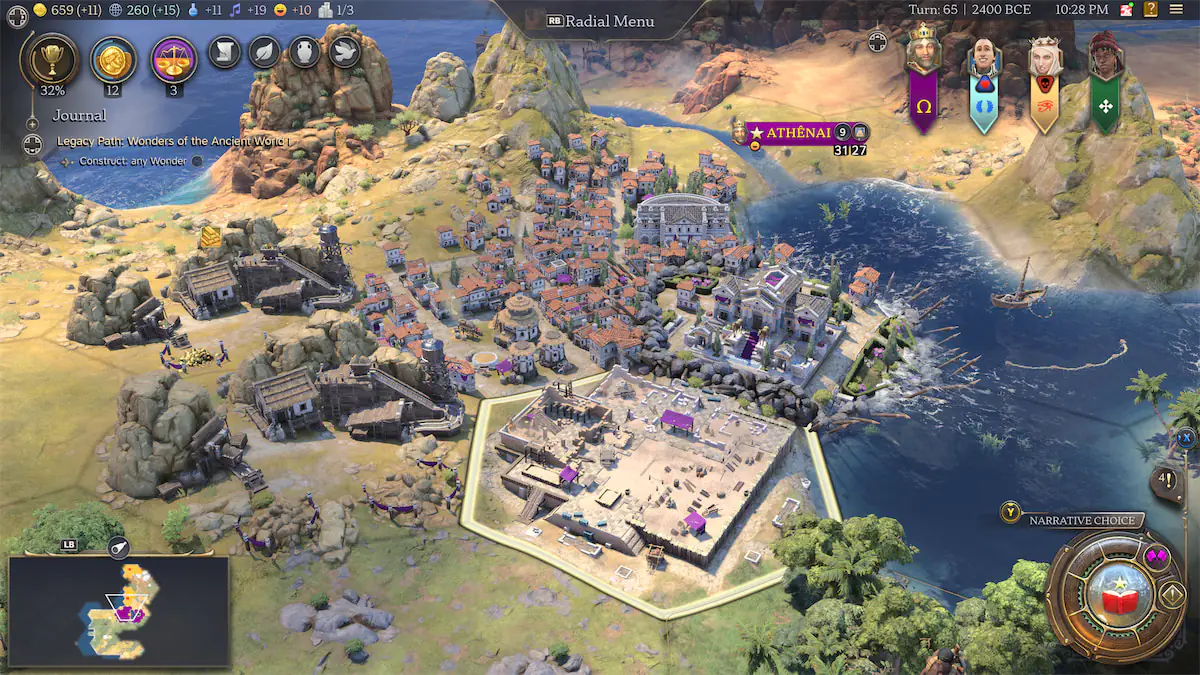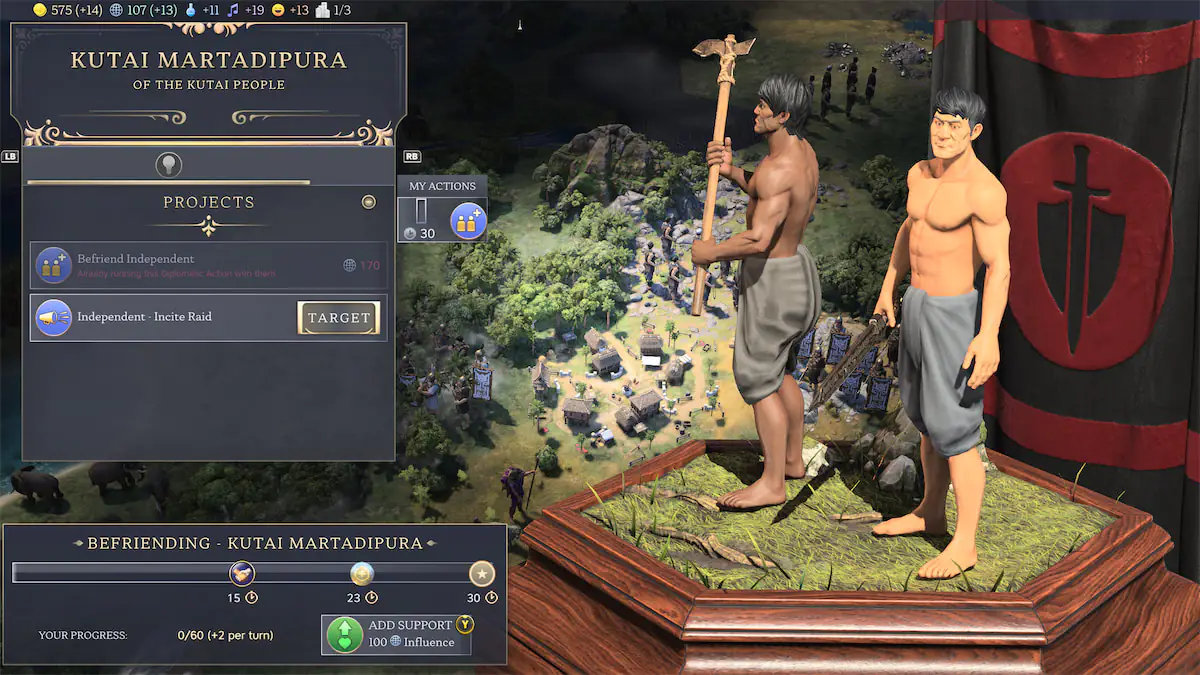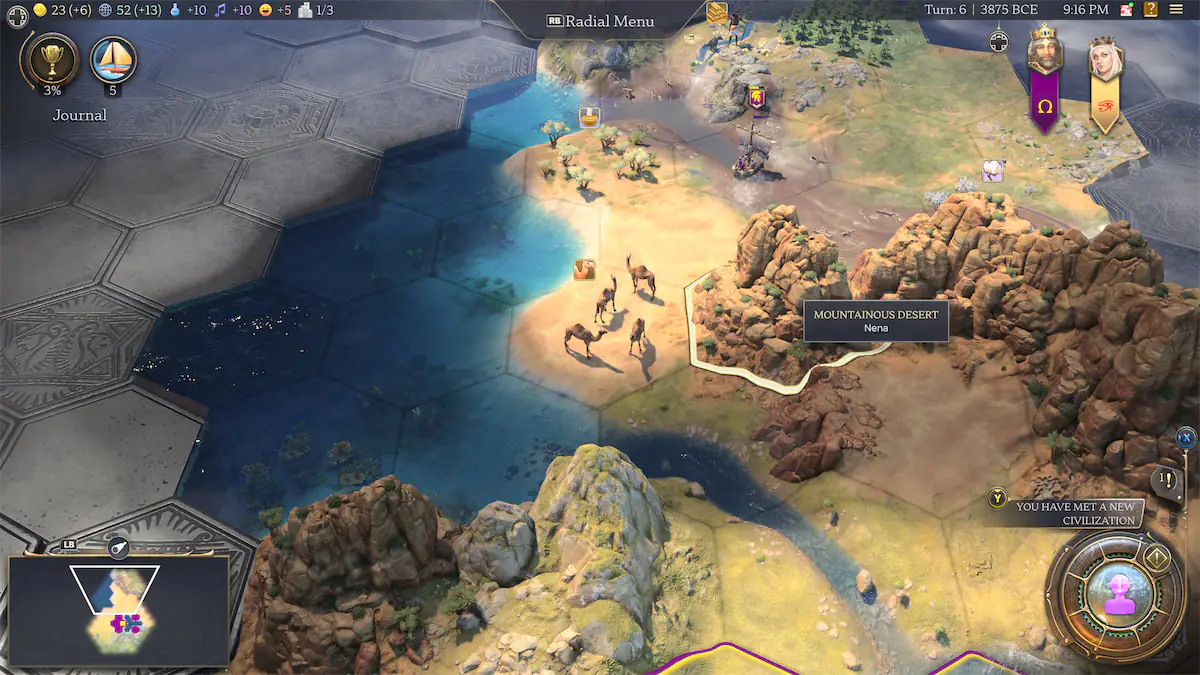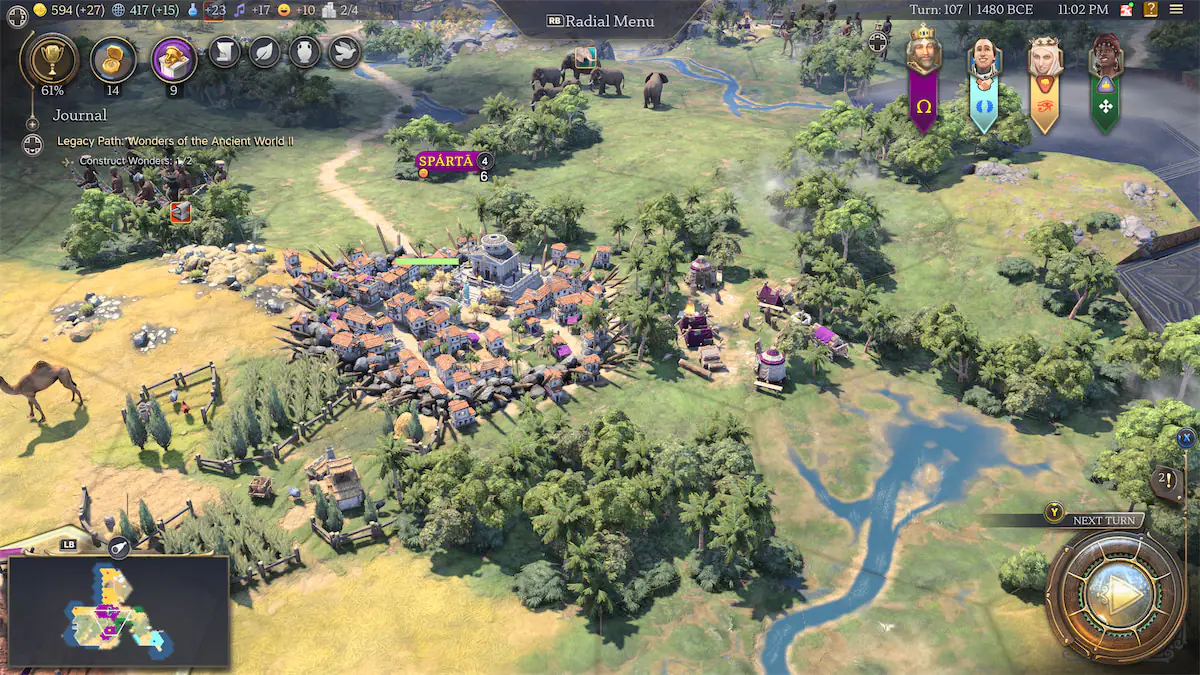© ROOT-NATION.com - Use of content is permitted with a backlink.
Civilization VII was never a cult game for me mostly because I was a console guy. Ports of the game weren’t unheard of, but they were never as good as the PC version and often felt like an afterthought. This began to slowly change: according to the developers, the Switch version was so successful that it made them rethink a lot. And now Civilization VII is out, as good on console as it ever was. But it’s not all great.

When it comes to 4X strategies, Civilization is in the class of its own. It’s massively popular, and for a good reason: approachable yet deep, it lets us be kings and emperors. It’s uniquely addictive, with a scope that’s rarely matched by any other game.
Civilization VII adopts a subdued aesthetic compared to Civilization VI’s vibrant, cartoonish style, with realistic terrain textures and dynamic environmental events like volcanic eruptions and river floods. The Xbox version that I tested delivers consistent 60 FPS performance, a technical feat unachieved by prior console entries. However, character animations during leader interactions remain underwhelming, limited to repetitive gestures that fail to match the depth of Civilization VI’s personality-driven diplomacy scenes.
While its mostly familiar, a lot has changed. Civilization VII introduces Commanders, a new unit class that allows the grouping of up to three military units (land, air, or naval) under a single leader. This system addresses longstanding complaints about Civilization VI’s “one unit per tile” rule, which often led to gridlock during large-scale wars. Commanders gain experience through combat, unlocking promotions across specialized skill trees — a departure from Civilization VI’s individual unit upgrades. While this adds strategic depth, it eliminates the ability to name veteran units, which I personally miss.
Read also: Star Wars Episode I: Jedi Power Battles Remaster review: Relive your childhood… if you dare

The game’s three-age structure (Ancient, Medieval, Modern) functions as interconnected “mini-games,” with each era introducing unique technologies, civic policies, and victory conditions. This contrasts sharply with Civilization VI’s continuous progression tree, which forced me to adapt strategies to era-specific challenges.
Civilization VII’s streamlined city management — automating aspects like worker assignments and trade routes — reduces micromanagement (finally!) The Xbox version’s interface further simplifies district planning through contextual tooltips, which too is a welcome addition. However, VII’s emphasis on military dominance (through siege mechanics and commander bonuses) narrows viable victory strategies compared to VI’s more balanced cultural/science/diplomatic pathways.
The game has a structured turn sequence where players must resolve all pending actions — such as unit orders and policy changes — before progressing. Thank God, because I used to miss a lot of critical decisions before. This newly found rigidity will surely be met with some criticism from the series’ loyalists, but this streamlines gameplay for console audiences only makes it more approachable, which is a plus in my book.

Another console-specific innovation is the radial menu system, which consolidates turn-based actions into a context-sensitive interface. This design reduces the clutter of traditional strategy game menus, allowing me to manage research, civics, military commands, and diplomatic alerts within a unified hub. It’s a tried and tested system, which, in theory, should make the gameplay smoother. This system minimizes the need for constant tile-by-tile navigation, though traversing expansive maps remains cumbersome on the controller. I frankly don’t know if it’s any better with a mouse. You can try though: the Xbox version has a full MKB support.
Compared to Civilization VI’s console port, which relied on nested menus and cursor-based selection, VII’s radial approach is very welcome indeed. Is it perfect? Not really. No 4X game is, not yet. But we’re getting there. Slowly.
Read also: Donkey Kong Country Returns HD review: Our Kong-structive Criticism

While there’s a lot to praise here, and to me, the game is as addicting as ever, I can’t also ignore the bugs. The game was released in a somewhat unpolished state, with some small issues making the experience a bit worse. Especially since console players face longer waits for critical fixes due to platform holders’ certification requirements. For example, Patch 1.01—which improved the minimap and added auto-unit cycling — reached PC days before consoles. Another issue is performance instability. I had a few crashes and stuttering during gameplay, mostly during late-game turns or when managing large empires. In the early game, it’s pretty much perfect. The game also uses the Quick Resume feature, which I love.
Verdict
Civilization VII is a bit of a mess. In some way, it seems unfinished, but the formula shines through even now. It’s still a game about the stories you make. Each choice matters, and I still find it hard to put the controller down. The new focus on console gamers is welcome (he said selfishly), but I hope the next batch of patches comes sooner rather than later.

